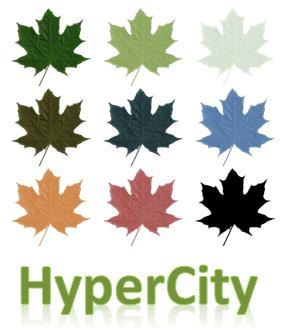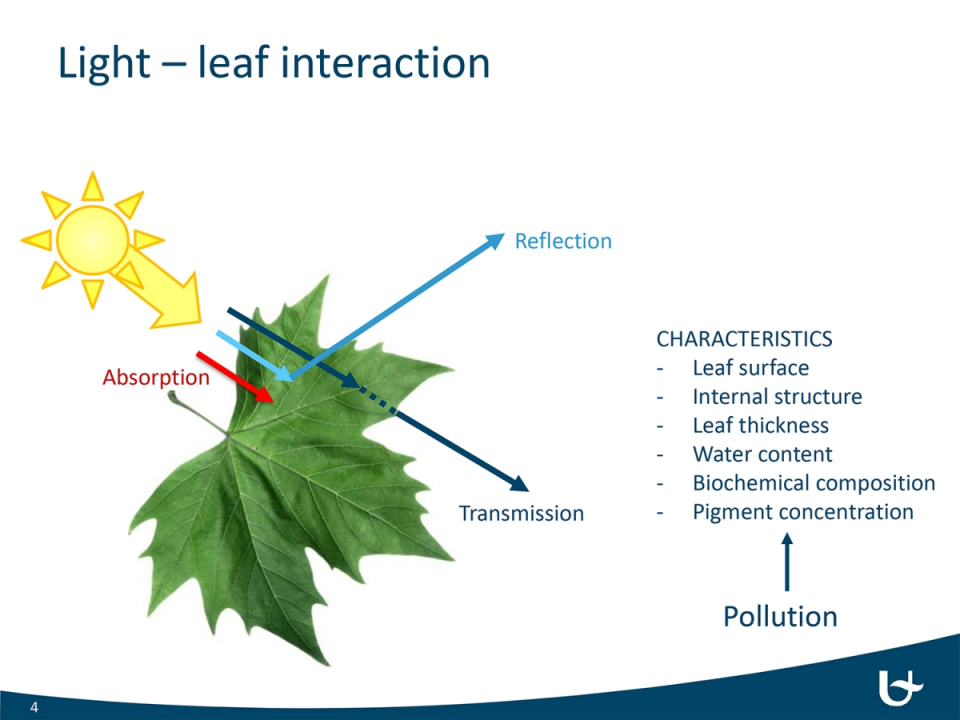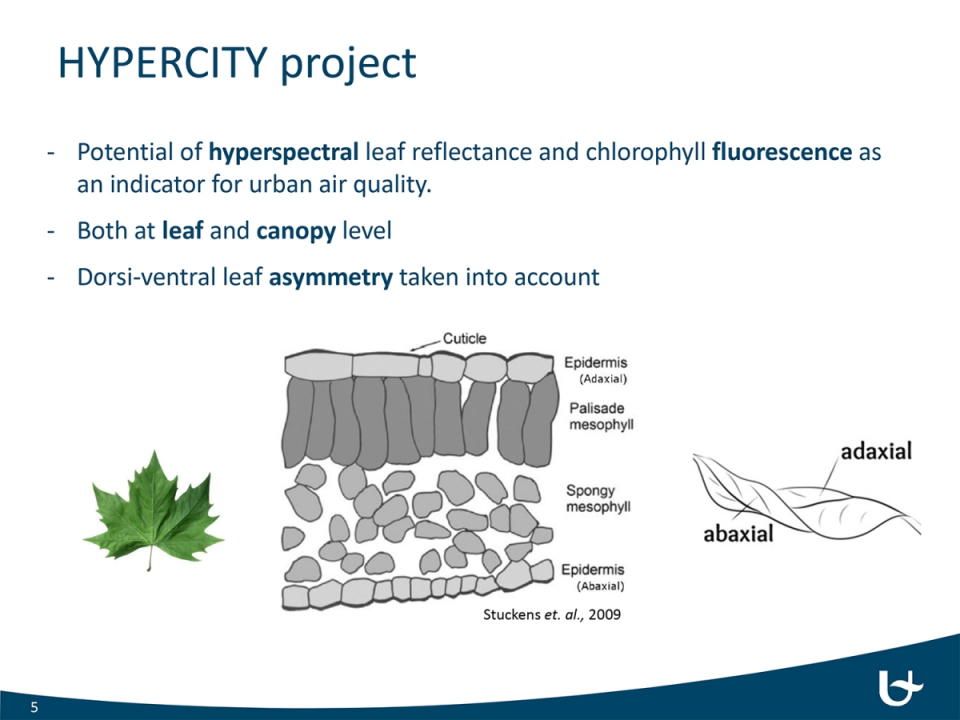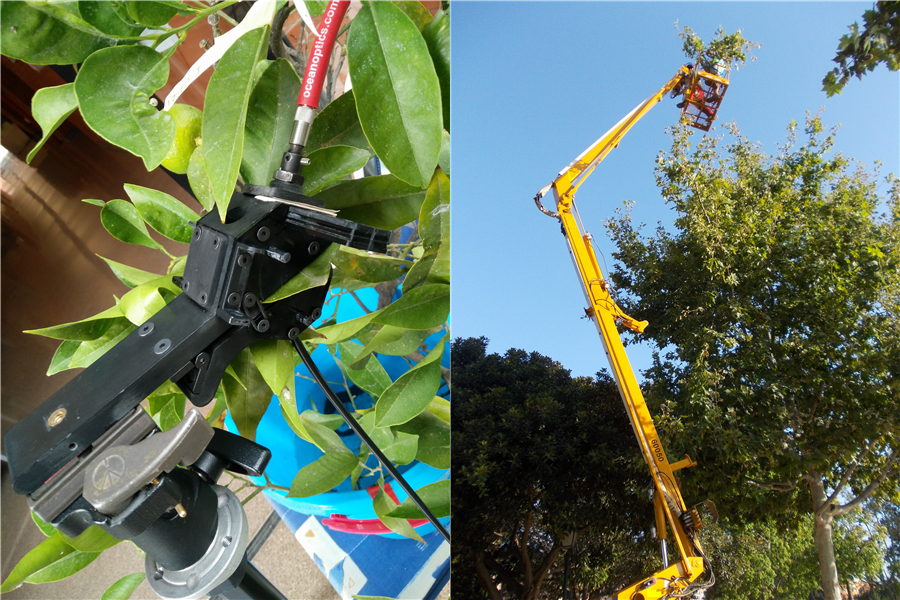Context and objectives
The overall objective of the HYPERCITY project is to develop, test and validate a plant-based passive biomonitoring methodology based on hyperspectral observations and considering leaf asymmetry. We made use of a dual approach, i.e.: (1) trees spatially distributed over the entire urban area for mapping purposes, and (2) large solitary trees growing in various contrasting urban environments in terms of air pollution used for scaling up exercises from leaf to canopy.
This overall objective is split up into the following objectives:
(i) Map the urban environmental air quality at high spatial resolution by magnetic leaf biomonitoring;
(ii) Map urban air quality based on physiological and reflectance based leaf characteristics and validate these maps against the maps obtained in (i) and simulated air pollution maps;
(iii) Scale up hyperspectral leaf reflectance to canopy level reflectance for trees growing in sites with contrasting air quality, taking leaf asymmetry into account and based on a modelling approach;
(iv) Develop a hyperspectral Normalized Difference Asymmetry Index (NDAI) at leaf level for trees growing at various levels of air quality as assessed in (i);
(v) Further develop and optimize the possibilities and applications of chlorophyll content mapping based on advanced machine learning regression algorithms that deal efficiently with hyperspectral data, and based on intensive physiological leaf measurements and additional validation data obtained in (i) and (iv); and
(vi) Formulate a protocol to estimate urban air quality based on high spatial resolution leaf/canopy data and/or airborne measurements.
Project outcome
Scientific results
- Variation in morphological leaf asymmetry can be detected using spectral reflectance and transmittance.
- We found no direct link between morphological leaf asymmetry and our air pollution indicators.
- Reflectance and transmittance at specific wavelengths are influenced by the local air pollution: trees growing in higher air pollution levels, have less hyperspectral reflectance / transmittance compared to less polluted areas.
- No added value of spectral dorsiventral asymmetry for monitoring of local air pollution, only adaxial reflectance is enough: promising for development of airborne remote sensing applications.
Societal (including environmental) relevance
Environmental stress can harm and damage plants, especially in urban environments. Trees growing in cities suffer from exposure to air pollution. This air pollution also poses serious health risks for humans. Therefore it is important to get a detailed insight in the spatial and temporal distribution of air pollution in cities. Biomonitoring using urban trees and remote sensing techniques can be a possibility for street-scale and time integrated monitoring of urban air pollution.
Potential Users
The results from this project are relevant for scientists, (urban) policy makers, environmental agencies, companies active in drone based monitoring, urban green services, urban planners, companies active in the field of public and urban green management, companies active in the field of precision agriculture and of course citizens.
The range of users is very broad as the importance and the need for sustainable and livable cities is still increasing. A very important part of such sustainable and livable cities is a healthy environment, including a healthy air, and the implantation, design and maintenance of green infrastructures which are two elements tackled in HYPERCITY.
Environmental/ Urban green services, Companies active in drone based monitoring
Outreach
HYPERCITY: Biomonitoring of Air Quality in Urban Areas
HYPERCITY: Biomonitoring van de luchtkwaliteit in stedelijke gebieden
| Project leader(s): | UA - Department Bioscience Engineering | |||
| Belgian partner(s) |
|
|||
| International partner(s) |
|
|||
| Location: |
Country:
Region:
|
|||
| Related presentations: | ||||
| Website: | https://www.uantwerpen.be/en/projects/hypercity/ | |||




